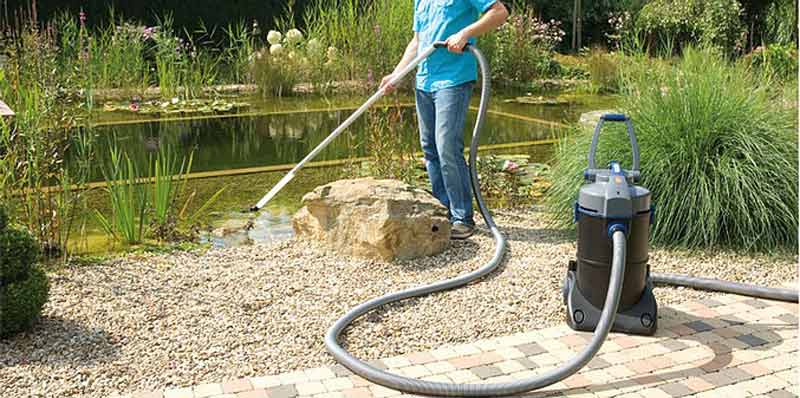
Koi ponds and decorative water features add a peaceful, elegant touch to any outdoor space. But like anything exposed to the elements, they get dirty over time. Algae, bird droppings, debris, and mineral buildup can make these once-beautiful areas look neglected. Enter: power washing. 💦
But wait! Before you fire up your pressure washer and aim it at your pond, there are some important safety precautions and best practices you need to know. Pressure washing these delicate systems improperly can damage liners, harm plants, or worse—hurt your koi. 🐠
This guide will walk you through the dos and don’ts of power washing koi ponds and ornamental water features without causing harm.
🧼 Should You Power Wash a Koi Pond?
The short answer: Yes, but only under specific conditions. Koi ponds can benefit from power washing when done properly, especially during seasonal cleanings or before resealing or repainting features. However, high-pressure water can easily harm:
- Pond liners and sealants
- Plumbing and filtration equipment
- Aquatic plants and beneficial bacteria
- And, most importantly, your fish
In most cases, you should only pressure wash a koi pond when it is fully drained and the koi have been safely relocated.
✅ The Dos of Power Washing Koi Ponds
1️⃣ Do Relocate Your Koi Before Cleaning
Before cleaning, place your koi in a separate holding tank with pond water. Use an aerator and cover the container with netting or shade to keep them safe. Stress-free koi are less prone to injury and disease. 🐟❤️
2️⃣ Do Fully Drain the Pond
Never pressure wash a full pond—it’ll send debris and chemicals into the water, harming fish and plants. Draining the pond also allows you to:
- Spot problem areas (algae, cracks, buildup)
- Remove sludge and organic matter
- Clean pumps and filters more effectively
3️⃣ Do Use a Gentle Spray Tip
Opt for a 25° or 40° spray tip and keep pressure under 1,500 PSI. This prevents tearing the liner or damaging rock walls. Always test a small area first. 🚿🪨
4️⃣ Do Focus on Surfaces, Not Fixtures
Clean the basin floor, sides, rocks, and waterfall walls—but avoid directly spraying lights, pumps, or nozzles. If needed, detach and hand-clean those with soft brushes. 🔧
5️⃣ Do Use Non-Toxic Cleaners (or None at All)
Avoid bleach, detergents, or any chemical that might remain on surfaces and harm your fish. In most cases, just water pressure is enough. For stubborn algae, use a diluted vinegar solution or an eco-safe pond cleaner approved for aquatic use. 🧴🌱
Browse Amazon For Pressure Washer Detergents Here
6️⃣ Do Rinse Everything Thoroughly
After cleaning, rinse all surfaces to remove remaining residue. Use a shop vac or sump pump to remove dirty water left behind. A final rinse ensures your pond is safe when refilled. ✅
7️⃣ Do Clean Mechanical Components Separately
Remove pumps, skimmers, filters, and UV clarifiers for hand cleaning. Use a hose or gentle spray to flush debris from filter pads and screens. Never blast these parts with full pressure. 💡
8️⃣ Do Recycle the Water (If Safe)
If your pond water isn’t chemically treated, you can recycle it by watering garden beds or lawns. Just make sure it doesn’t contain fish waste in concentrations that could harm plants. ♻️🌼
❌ The Don’ts of Power Washing Koi Ponds
❌ Don’t Spray a Full Pond
Even low-pressure blasts can stir up toxins and sediment that stress or kill fish. Never pressure wash a pond with water and fish still inside. 🚫🐟
❌ Don’t Use Harsh Chemicals
Avoid products that contain bleach, ammonia, or petroleum-based ingredients. These can linger on surfaces and be deadly to aquatic life—even trace amounts. ☠️
❌ Don’t Forget Beneficial Bacteria
When cleaning, you may destroy colonies of helpful bacteria living in your pond liner or filter media. To restore balance, add a bacterial booster once the pond is refilled. 🧫
❌ Don’t Spray Close to Rubber Liners
Rubber and plastic liners are prone to tearing or warping under high pressure. Always keep the spray wand at least 2 feet away from surfaces, and avoid zero-degree nozzles.
❌ Don’t Rinse Debris Back into the Pond
Be mindful of where the dirty water flows. If possible, direct runoff away from the pond area or drain to prevent sludge from returning. 💧
🕒 When to Pressure Wash a Koi Pond
The best times to deep-clean your pond are:
- Early spring before the koi become active
- Late fall after the fish go dormant
- Before sealing or making major repairs to the structure
- If you’re experiencing excessive algae, smells, or poor water clarity
Regular maintenance like skimming and filter cleaning should still occur year-round, but full-on pressure washing is typically a once- or twice-a-year task. 📆
🐟 Aftercare: Refilling the Pond
Once cleaning is complete:
- Check all plumbing and connections
- Add fresh water slowly
- Dechlorinate if using tap water
- Add beneficial bacteria
- Return koi once temperature and pH are stable
Monitor the fish closely for signs of stress over the next 48 hours. Healthy koi will start exploring their clean surroundings with curiosity! 🐠🌈
🌟 Final Thoughts
Power washing a koi pond or water feature can bring it back to life—but it must be done with knowledge, care, and preparation. The key takeaways:
✅ Remove the koi first
✅ Use low pressure and safe cleaners
✅ Avoid damage to liners and pumps
✅ Rinse thoroughly and recondition the water
By following these steps, you can safely deep-clean your pond and help your koi thrive in a sparkling clean environment. 🌊🐟🧼



